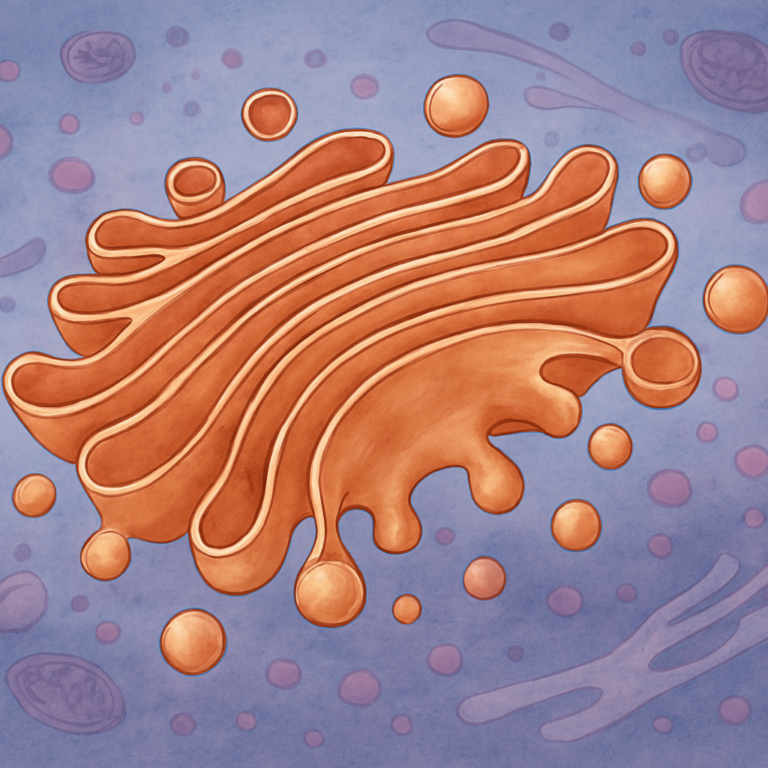Introduction
Adenylate Cyclase (AC) is a crucial enzyme that plays a significant role in the intricate network of cellular communication. It is responsible for converting adenosine triphosphate (ATP), the cell’s primary energy source, into cyclic adenosine monophosphate (cAMP). This transformation is a critical step in many cellular pathways and influences numerous biological processes such as memory function, heart rate and insulin secretion (Pieroni et al., 1993).
Role in Cellular Signaling
AC is a key player in G protein-coupled receptor (GPCR) signaling pathways. GPCRs are a large, diverse group of cell surface receptors involved in many diseases and are the target of approximately 40% of all modern medicinal drugs (Sriram & Insel, 2018). When a hormone or neurotransmitter binds to a GPCR, it activates the G protein within the cell, which then triggers AC. AC catalyzes the conversion of ATP into cAMP, an important second messenger that propagates the signal within the cell (Cooper, 2003).
Diversity and Regulation of Adenylate Cyclase
There are nine membrane-bound isoforms and one soluble form of AC, and their expression varies depending upon the cell type. Each isoform is regulated by different G protein subunits and other factors such as calcium ions, thereby providing multiple layers of regulation to fine-tune cAMP production (Sadana & Dessauer, 2009).
Implications in Health and Disease
Given its crucial role in cellular signaling, it is not surprising that dysregulation of AC activity has been linked to various diseases. Overactive AC activity is associated with conditions such as hyperthyroidism and certain types of tumors, while reduced AC activity is implicated in conditions like bronchial asthma and heart failure (Seifert & Dove, 2009).
Research has also found that mutations in AC genes can lead to severe disorders. For example, mutations in the ADCY5 gene, which encodes AC5, have been linked to familial dyskinesia with facial myokymia, a rare inherited neurological disorder (Chen et al., 2014).
Conclusion
Adenylate Cyclase is a critical component of the cellular machinery, driving communication pathways that regulate numerous biological processes. Its diverse isoforms and complex regulation allow for precise control over these pathways. However, when this fine balance is disrupted, it can lead to various health conditions. As we continue to unravel the intricacies of this key enzyme, we can better understand its role in health and disease and explore its potential as a therapeutic target.
References
- Chen, Y. Z., et al. (2014). Gain-of-function ADCY5 mutations in familial dyskinesia with facial myokymia. Annals of Neurology, 75(4), 542-549.
- Cooper, D. M. (2003). Regulation and organization of adenylyl cyclases and cAMP. Biochemical Journal, 375(Pt 3), 517–529.
- Pieroni, J. P., et al. (1993). Expression of two types of guanine nucleotide-binding protein alpha subunit in rat heart. Circulation Research, 73(5), 829-839.
- Sadana, R., & Dessauer, C. W. (2009). Physiological roles for G protein-regulated adenylyl cyclase isoforms: insights from knockout and overexpression studies. Neuro-Signals, 17(1), 5–22.
- Seifert, R., & Dove, S. (2009). Functional selectivity of GPCR ligand stereoisomers: new pharmacological opportunities. Molecular Pharmacology, 75(1), 13–18.
- Sriram, K., & Insel, P. A. (2018). G Protein–Coupled Receptors as Targets for Approved Drugs: How Many Targets and How Many Drugs? Molecular Pharmacology, 93(4), 251–258.


